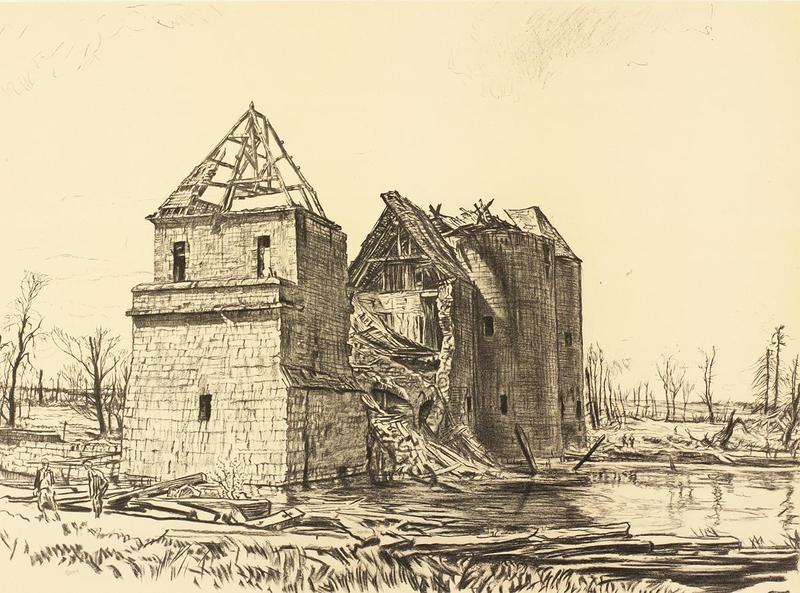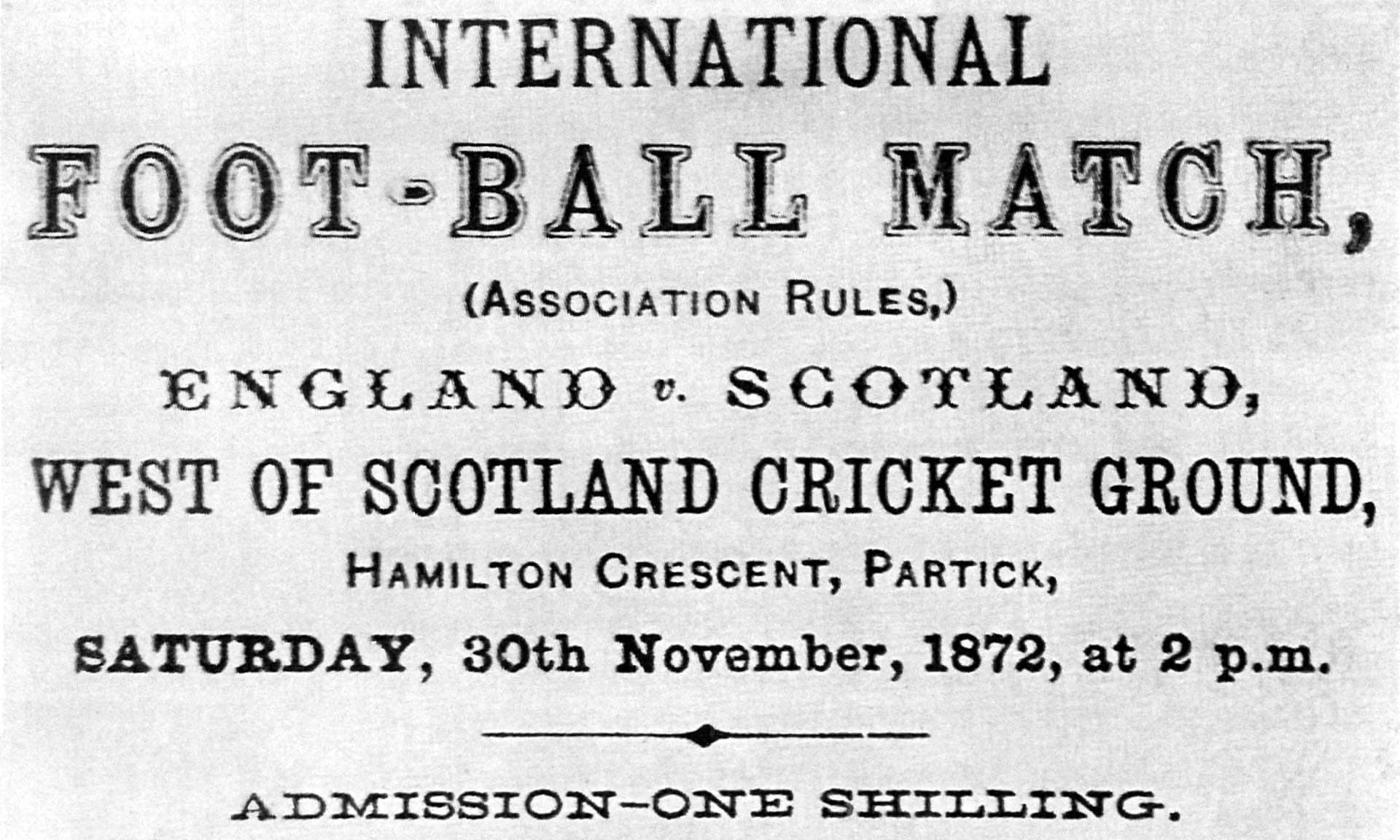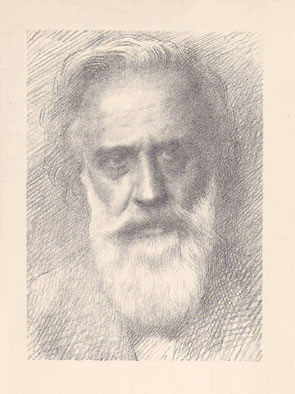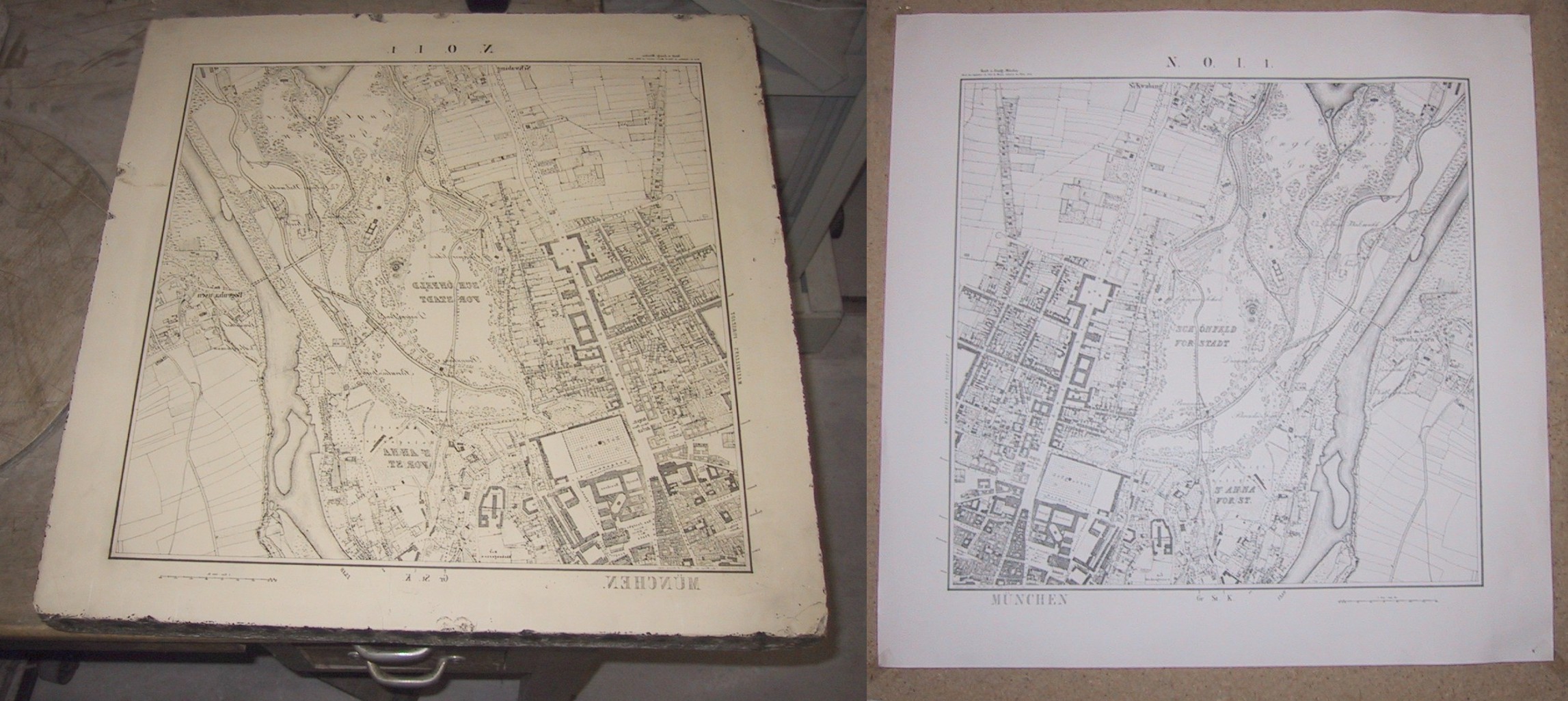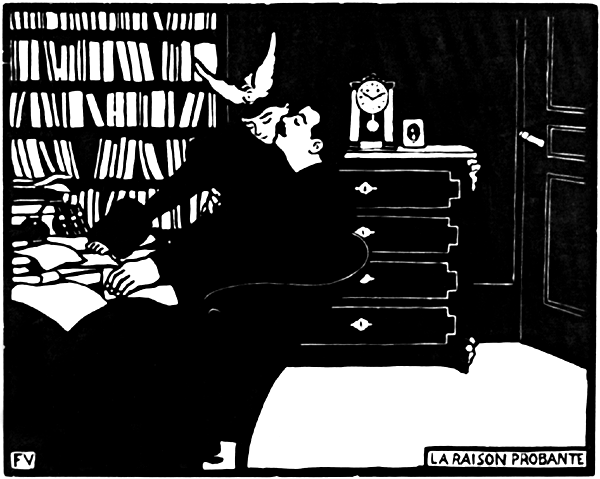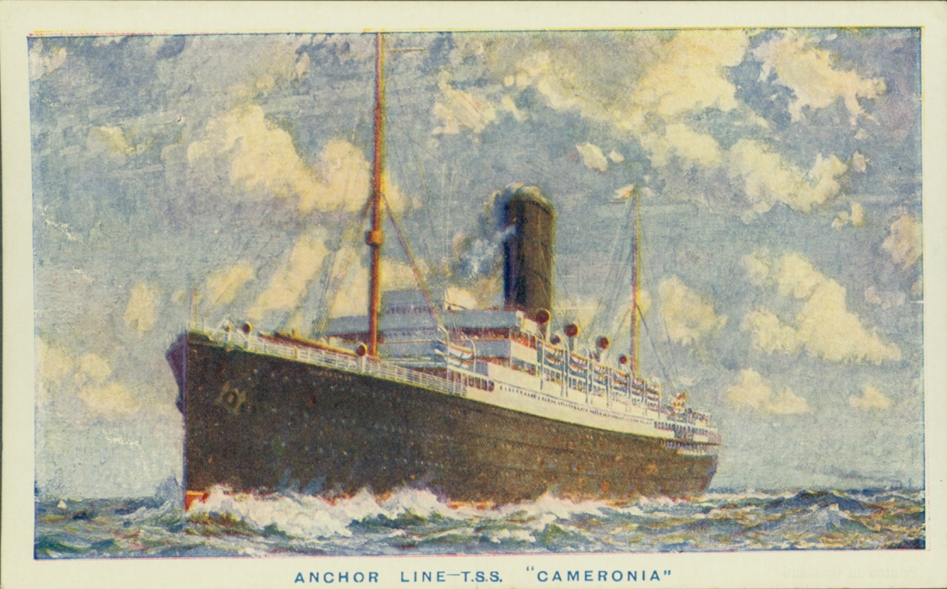|
Sir Muirhead Bone
Sir Muirhead Bone (23 March 1876 – 21 October 1953) was a Scottish etcher and watercolourist who became known for his depiction of industrial and architectural subjects and his work as a war artist in both the First and Second World Wars. A figure in the last generation of the Etching Revival, Bone's early large and heavily worked architectural subjects fetched extremely high prices before the Wall Street crash of 1929 deflated the collectors' market. He was well known, if not notorious, for publishing large numbers of different states of etchings, encouraging collectors to buy several impressions. Bone was an active member of both the British War Memorials Committee in the First World War and the War Artists' Advisory Committee in the Second World War. He promoted the work of many young artists and served as a Trustee of the Tate Gallery, the National Gallery, and the Imperial War Museum. Early life Muirhead Bone was born in Partick, Glasgow. His parents were journal ... [...More Info...] [...Related Items...] OR: [Wikipedia] [Google] [Baidu] [Amazon] |
Francis Dodd (artist)
Francis Edgar Dodd (29 November 1874 – 7 March 1949) was a British portrait painter, landscape artist and printmaker. Biography Dodd was born in Holyhead, Anglesey, Wales, the son of a Wesleyan minister. He trained at the Glasgow School of Art alongside Muirhead Bone, who married Dodd's sister, Gertrude Helena Dodd, Gertrude. At Glasgow, Dodd won the Haldane Scholarship in 1893 and then travelled around France, Italy and later Spain. Dodd returned to England in 1895 and settled in Manchester, becoming friends with Charles Holden, before moving to Blackheath in London in 1904. During World War I, in 1916, he was appointed an official war artist by Charles Masterman, the head of the War Propaganda Bureau, WPB. Serving on the Western Front (World War I), Western Front, he produced more than 30 portraits of senior military figures. However, he also earned a considerable peacetime reputation for the quality of his watercolours and portrait commissions. He was appointed a trustee ... [...More Info...] [...Related Items...] OR: [Wikipedia] [Google] [Baidu] [Amazon] |
Partick
Partick (, Scottish Gaelic: ''Partaig'') is an area of Glasgow on the north bank of the River Clyde, just across from Govan. To the west lies Whiteinch, to the east Yorkhill and Kelvingrove Park (across the River Kelvin), and to the north Broomhill, Glasgow, Broomhill, Hyndland, Dowanhill, Hillhead, areas which form part of the Glasgow#West End, West End of Glasgow. Partick was a Police burgh from 1852 until 1912 when it was incorporated into the city.Second City of The Empire: 1830s to 1914 from theglasgowstory.com. Retrieved 22 December 2011. Partick is the area of the city most connected with the Scottish Highlands, Highlands, and several Gaelic agencies, such as the Gaelic Books Council (Scottish Gaelic: ''Comhairle nan Leabhraichean'') are located in the area. [...More Info...] [...Related Items...] OR: [Wikipedia] [Google] [Baidu] [Amazon] |
New English Art Club
The New English Art Club (NEAC) is a society for contemporary artists that was founded in London, England, in 1886 as an alternative venue to the Royal Academy. The NEAC holds an annual exhibition of paintings and drawings at the Mall Galleries in London, exhibiting works by both members and artists from Britain and abroad whose work has been selected from an annual open submission. History Young English artists returning from studying art in Paris, France, mounted the first exhibition of the New English Art Club in April 1886. Among them were William Laidlay, Thomas Cooper Gotch, Frank Bramley, John Singer Sargent, Philip Wilson Steer, George Clausen and Stanhope Forbes. Another founding member was G. P. Jacomb-Hood. An early name suggested for the group was the "Society of Anglo-French Painters", which gives some indication of their origins. As a note in the catalogue to their first exhibition explained, "This Club consists of 50 Members, who are more or less united in ... [...More Info...] [...Related Items...] OR: [Wikipedia] [Google] [Baidu] [Amazon] |
Alphonse Legros
Alphonse Legros (; 8 May 1837 – 8 December 1911) was a French, later British, painter, etcher, sculptor, and medallist. He moved to London in 1863 and later was naturalized as British. He was important as a teacher in the British etching revival. Life Legros was born in Dijon; his father was an accountant, and came from the neighbouring village of Véronnes. While young, Legros visited the farms of his relatives, and the peasants and landscapes of that part of France are the subjects of many of his works. He was sent to the art school at Dijon with a view to qualifying for a trade, and was apprenticed to Maître Nicolardo, house decorator and painter of images. In 1851, Legros left for Paris, France, Paris to take another situation; but passing through Lyon he worked for six months as journeyman wall-painter under the decorator Beuchot, who was painting the chapel of Cardinal Bonald in the cathedral. In Paris, Legros studied with Charles-Antoine Cambon, scene-painter and ... [...More Info...] [...Related Items...] OR: [Wikipedia] [Google] [Baidu] [Amazon] |
Dugald MacColl
Dugald Sutherland MacColl (10 March 1859 – 21 December 1948) was a Scottish watercolour painter, art critic, lecturer and writer. He was keeper of the Tate Gallery for five years. Life MacColl was born in Glasgow and educated at the University of London and the University of Oxford between 1876 and 1884. He also studied at the Westminster School of Art and the Slade School under Alphonse Legros between 1884 and 1892. Although an accomplished watercolourist, he is best remembered as a writer and lecturer on art. From 1890 to 1895 he was art critic for ''The Spectator'', and for the '' Saturday Review'' from 1896 to 1906. MacColl became a member of the New English Art Club in 1896, and edited the ''Architectural Review'' from 1901 to 1905. He published the authoritative book, ''Nineteenth Century Art'', in 190and his biography ''Philip Wilson Steer'' was awarded the 1945 James Tait Black Memorial Prize. In his journalism and books he was a major advocate of the French Impre ... [...More Info...] [...Related Items...] OR: [Wikipedia] [Google] [Baidu] [Amazon] |
William Strang
William Strang (13 February 1859 – 12 April 1921) was a Scottish painter and printmaker, notable for illustrating the works of John Bunyan, Bunyan, Samuel Taylor Coleridge, Coleridge and Rudyard Kipling, Kipling. Early life Strang was born at Dumbarton, the son of Peter Strang, a builder, and was educated at the Dumbarton Academy. For fifteen months after leaving school he worked in the counting-house of a firm of shipbuilders, then in 1875, when he was sixteen, went to London. There, he was a pupil of Edward Poynter for three months, before studying drawing and etching under Alphonse Legros at the Slade School of Fine Art for six years. Strang had great success as an etching, etcher and became assistant master in the etching class. He was one of the founding members of the Royal Society of Painter-Printmakers, Royal Society of Painter-Etchers, and his work was part of its first exhibition in 1881. Some of his early plates were published in ''The Portfolio'' and other art m ... [...More Info...] [...Related Items...] OR: [Wikipedia] [Google] [Baidu] [Amazon] |
British Museum
The British Museum is a Museum, public museum dedicated to human history, art and culture located in the Bloomsbury area of London. Its permanent collection of eight million works is the largest in the world. It documents the story of human culture from its beginnings to the present.Among the national museums in London, sculpture and decorative art, decorative and applied art are in the Victoria and Albert Museum; the British Museum houses earlier art, non-Western art, prints and drawings. The National Gallery holds the national collection of Western European art to about 1900, while art of the 20th century on is at Tate Modern. Tate Britain holds British Art from 1500 onwards. Books, manuscripts and many works on paper are in the British Library. There are significant overlaps between the coverage of the various collections. Established in 1753, the British Museum was the first public national museum. In 2023, the museum received 5,820,860 visitors, 42% more than the previous y ... [...More Info...] [...Related Items...] OR: [Wikipedia] [Google] [Baidu] [Amazon] |
Lithography
Lithography () is a planographic method of printing originally based on the miscibility, immiscibility of oil and water. The printing is from a stone (lithographic limestone) or a metal plate with a smooth surface. It was invented in 1796 by the German author and actor Alois Senefelder and was initially used mostly for sheet music, musical scores and maps.Meggs, Philip B. ''A History of Graphic Design''. (1998) John Wiley & Sons, Inc. p 146, .Carter, Rob, Ben Day, Philip Meggs. ''Typographic Design: Form and Communication'', Third Edition. (2002) John Wiley & Sons, Inc. p. 11. Lithography can be used to print text or images onto paper or other suitable material. A lithograph is something printed by lithography, but this term is only used for printmaking, fine art prints and some other, mostly older, types of printed matter, not for those made by modern commercial lithography. Traditionally, the image to be printed was drawn with a greasy substance, such as oil, fat, or wax on ... [...More Info...] [...Related Items...] OR: [Wikipedia] [Google] [Baidu] [Amazon] |
Printmaking
Printmaking is the process of creating work of art, artworks by printing, normally on paper, but also on fabric, wood, metal, and other surfaces. "Traditional printmaking" normally covers only the process of creating prints using a hand processed technique, rather than a photographic reproduction of a visual artwork which would be printed using an electronic machine (Printer (computing), a printer); however, there is some cross-over between traditional and digital printmaking, including risograph. Prints are created by transferring ink from a Matrix (printing), matrix to a sheet of paper or other material, by a variety of techniques. Common types of matrices include: metal plates for engraving, etching and related intaglio printing techniques; stone, aluminum, or polymer for lithography; blocks of wood for woodcuts and wood engravings; and linoleum for linocuts. Screens made of silk or synthetic fabrics are used for the screen printing process. Other types of matrix substrates ... [...More Info...] [...Related Items...] OR: [Wikipedia] [Google] [Baidu] [Amazon] |
Gertrude Helena Dodd
Gertrude Helena Bone, Lady Bone ( Dodd; 1876–1962) was a British writer who published during the Edwardian era. She wrote short stories, three novels, and several illustrated collections. Life Gertrude Dodd was the daughter of the Methodist minister Benjamin Dodd, and younger sister to the artist Francis Dodd. She was raised in Glasgow, where her brother attended Garnett Hill School and met Muirhead Bone, her future husband. Gertrude and Muirhead became engaged in 1898, but could not afford to marry until five years later, when he published his first portfolio of drawings. They married in 1903 and moved to Thamescote, Chiswick. Their first son, Stephen Bone, was born the next year on 13 November 1904 in Chiswick. A second son, Gavin Bone, was born in 1907. Gertrude Bone, like her father, was a "staunch Methodist": Stephen Bone remembered his childhood as one in which "presents, entertaining, and alcohol were banished; pencil and paper for drawing were deemed sufficient div ... [...More Info...] [...Related Items...] OR: [Wikipedia] [Google] [Baidu] [Amazon] |
Anchor Line (steamship Company)
Anchor Line was a Scottish merchant shipping company that was founded in 1855 and dissolved in 1980. Background The Anchor Line shipping company grew from small beginnings in tandem with the River Clyde shipbuilding industry as the Glasgow river was transformed. In the 19th century rapid industrialisation the Clyde changed from a shallow meandering river into one of the industrialised world's greatest ports and a hub of shipbuilding and marine engineering expertise. From the 1880s until the 1940s the company was famous for its sleek ships and the comfort it offered its passengers at a very affordable cost. While not as large or famous as Cunard or P&O, the Anchor Line built up a reputation for value and became well known for employing some of the finest marine artists of the day to create its beautiful posters. It also played on its Scottish roots and employed Scottish crew and cabin crew, advertising "Scottish ships and Scottish crew for Scottish passengers". Beginnings T ... [...More Info...] [...Related Items...] OR: [Wikipedia] [Google] [Baidu] [Amazon] |
